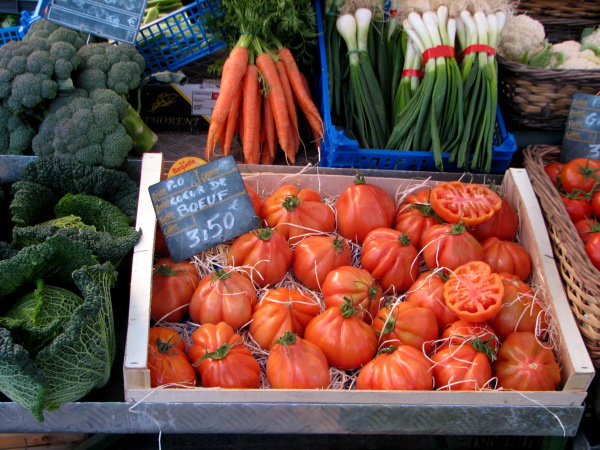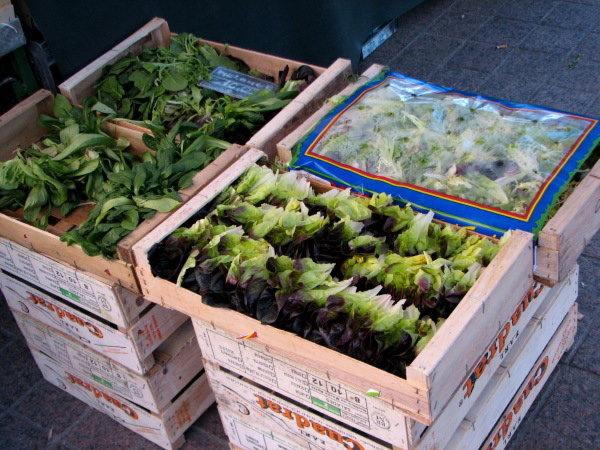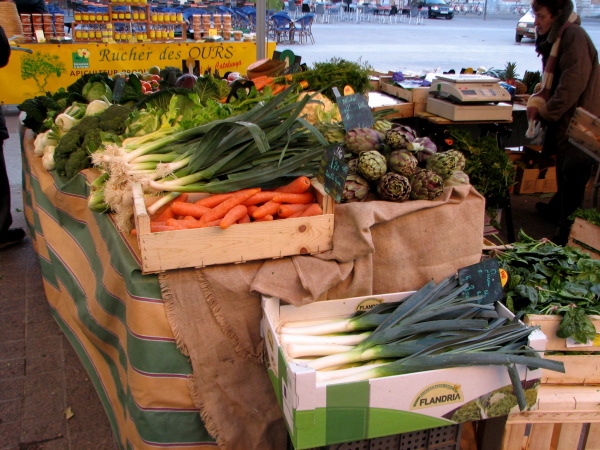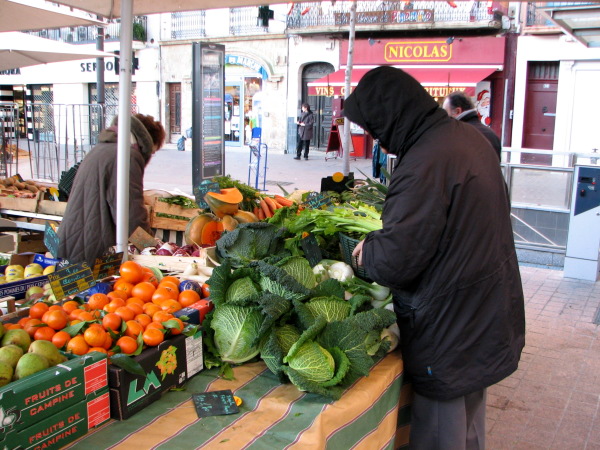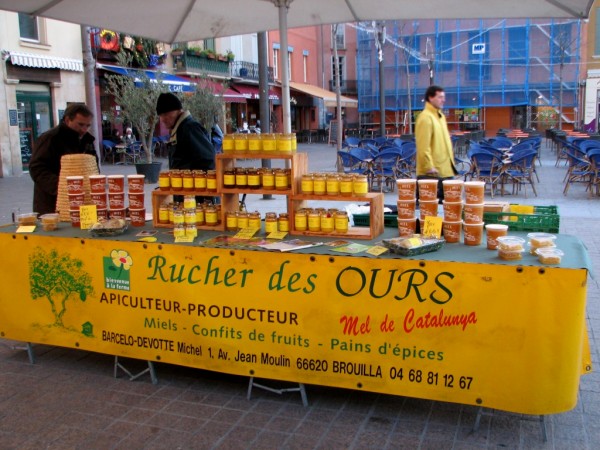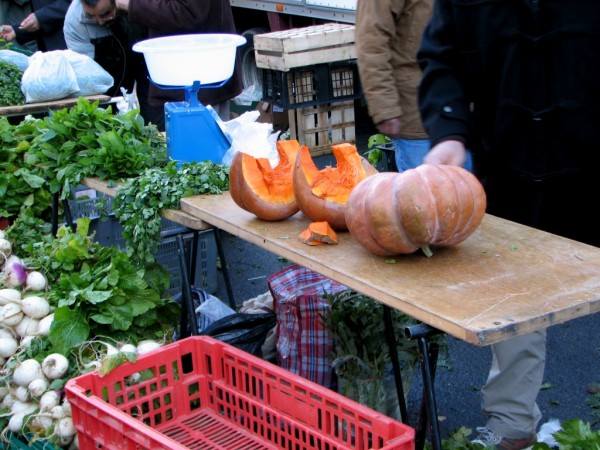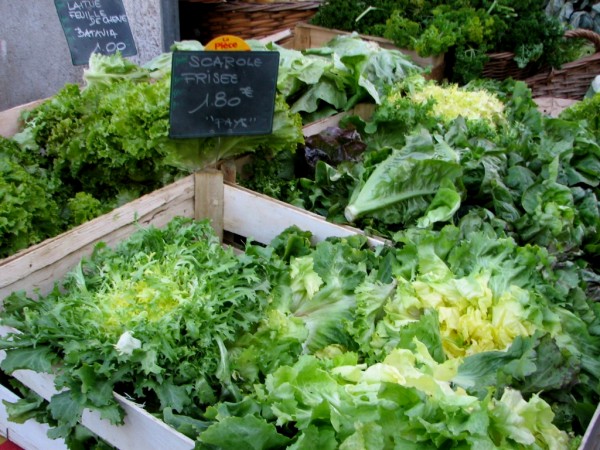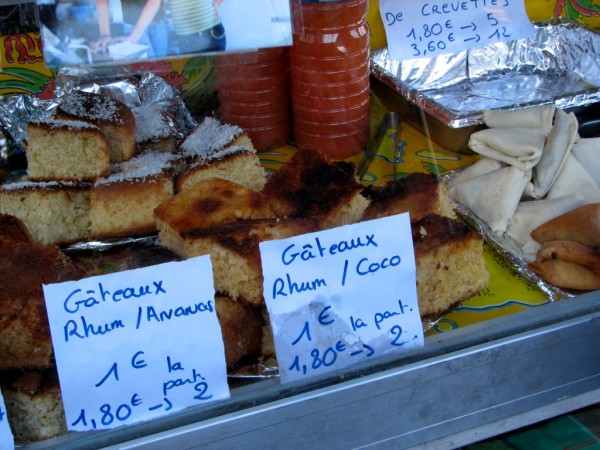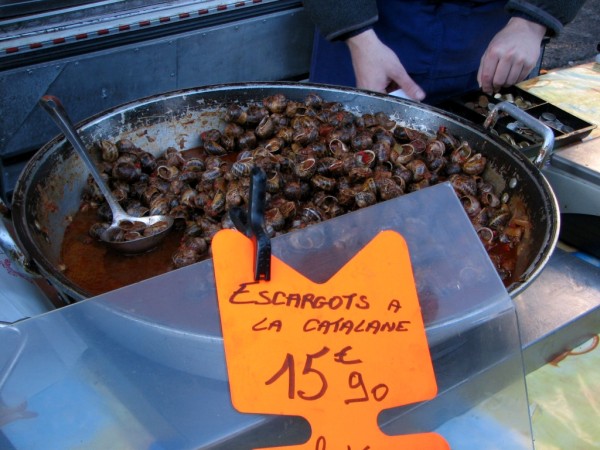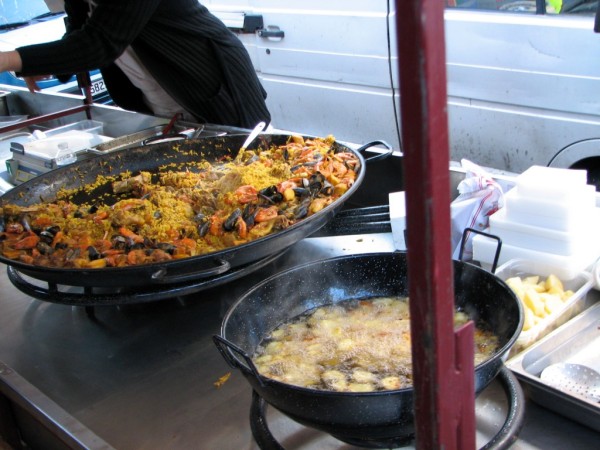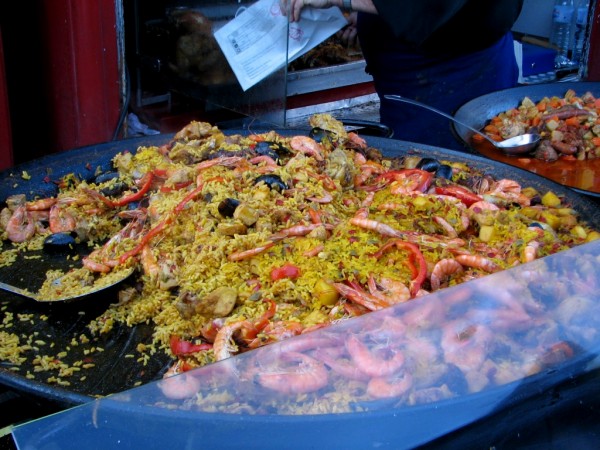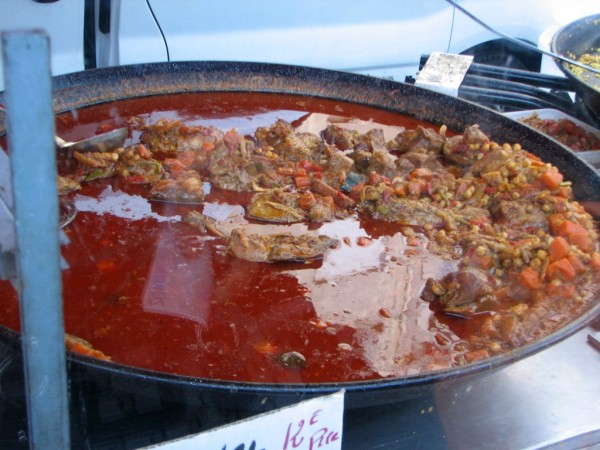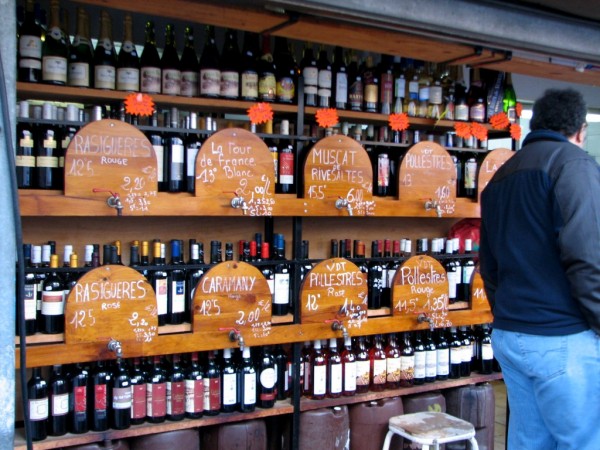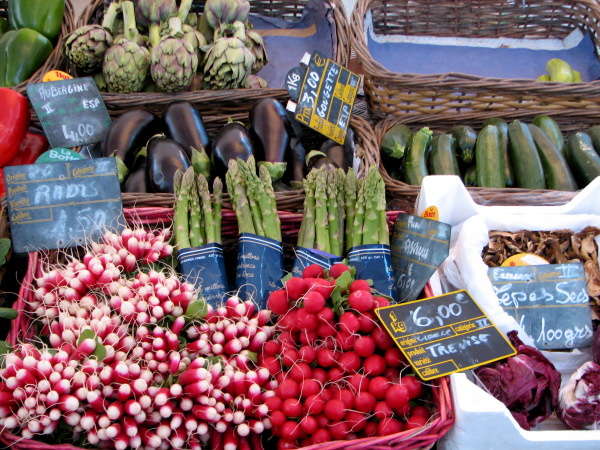
This is a guest column by Anivid, who lives in the South of France and who also took these photos in markets near her home.
By Anivid
Hello Everybody,
We’re here on a French town market in the South. Even though it’s January, it’s not extremely cold – around 48° Fahrenheit. The time of the day is early in the morning, where the customers haven’t yet started to arrive. The marchandises (fruit, vegetable & especially for this week: honey) are nicely presented – a quality, I personally am very fond of. It’s not only about finding something edible to a fair price – it’s also about esthetics – you first eat with the eyes, then the mouth & last the stomach – all three have to be given their share of attention & consideration 😉 E.g. the lettuce is presented in a nice row, the big tomatoes (called Tomato de Boeuf), are sliced into halves for the customers to enjoy the beautifully arranged chambers inside, with the intersections covered with film. There’s shown respect for the country’s products! Perhaps it’s better saying the countries’ products, as e.g. the egg-plant (aubergine) and the squash (courgette) are from northern Spain (marked: ESP), whereas the radish (radis), radicchio = Belgian endive (trévise = chicorée rouge, where the roots are used for “coffee”. Do you know chicory coffee in the States ??, in Europe we knew it during WWII, and in France it became a specialty we still know ;-), and tomato are from P.O. our departement (66) Pyrénées-Orientales.
You see, the northern part of Spain (South Catalonia), and the southern part of France (North Catalonia) once belonged together, but the Treaty of the Pyrenees 1659 gave one part to France and another to Spain (not to speak about an enclave in France, called Llivia, which became Spanish 😉 A little earlier Andorra had become a co-principality with the French President and the Monsignore on Sicily as co-princes – Andorra is situated at the foot of département Pyrénées-Orientales 😉 We have a lot of such historically based constructions in Europe. All this happened in the late Medieval Ages. Earlier, around 1100-1300 same landscapes together with Provence and the Balearic Islands belonged to a kingdom called, the Kingdom of Mallorca, and further back, in the Antiquity, the romans were here. Hannibal & the elephants crossed the Pyrénées before they finally came to the Alps. The road they made is still here 😉
Enough history ??
We’ll go back to the market.
There being a whole booth with honey, the light, creamy sort as well as the darker, almost liquid sort – and here on the honey booth we can see the two official languages in the P.O. represented: French (miel) and Catalan (mel). Catalan is a specific language totally different from both French and Spanish. One can learn a lot by a little trip to the market – eh ? I assume you know all the products over-there, also the avocado, the kiwifruit, the artichoke (artichaut), the pumpkin (potiron), the broccoli, and the fenugreek (fenugrec).
Voila ! – what are you saying ??
